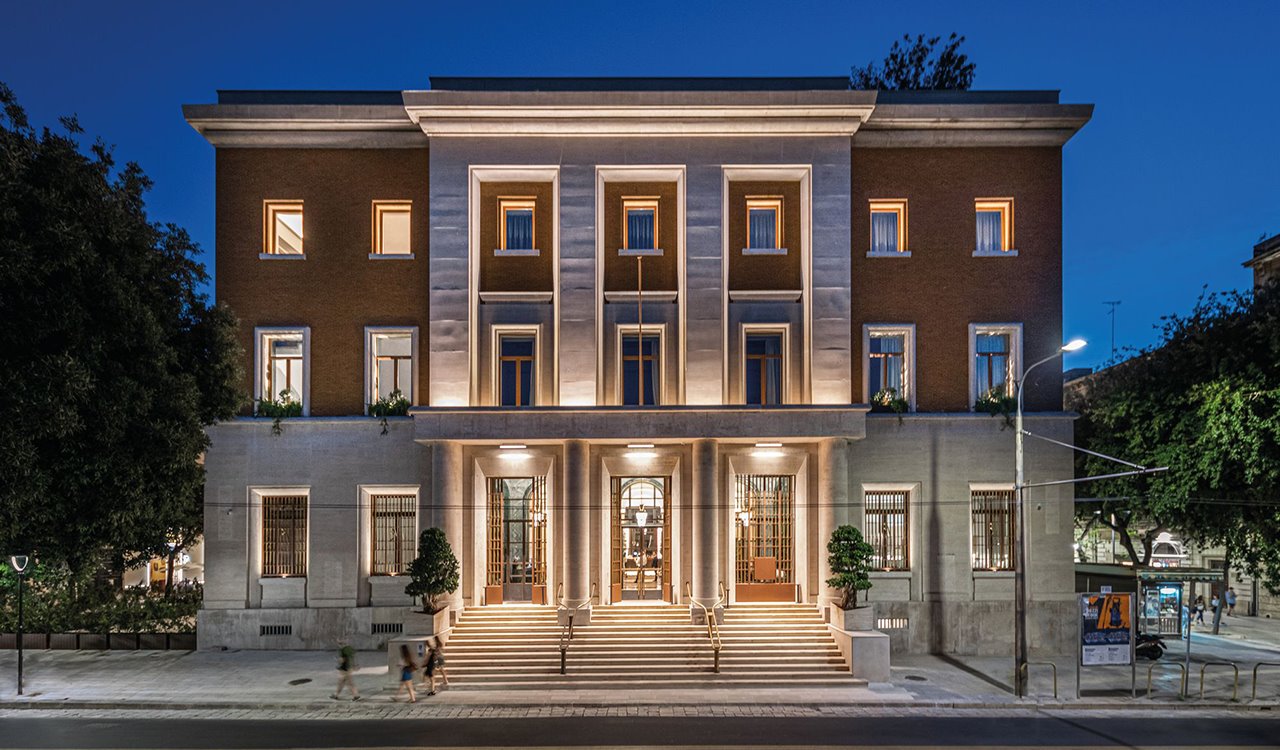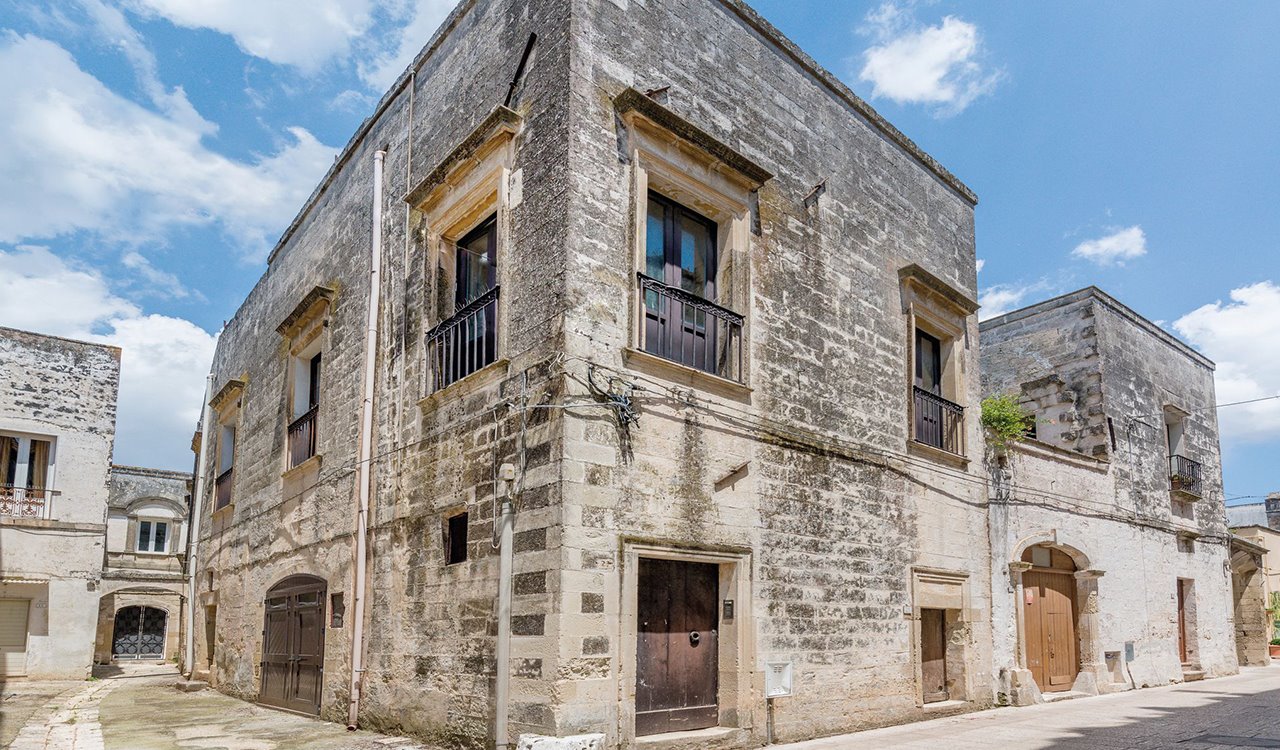
The house of your dreams at a good price
According to Adriana Valentino, head of the Lecce Italian Federation of Professional Estate Agents (FIAIP), “Salento is one of the most popular regions among Italian investors. Many buyers come from northern Italy, particularly Milan, while the region also attracts investors from Belgium, France, Germany and Britain. The greatest demand is for fully renovated urban dwellings and rural properties. Farmsteads and historic properties that offer state-of-the-art amenities are by far the most sought-after properties, but abandoned buildings in historic countryside villages boasting a redeveloped village centre are also in high demand”. So the range of properties is broad, from a €200,000 historic building in need of renovation in Gallipoli to a €2 million beachfront villa. According to Nadia Roma of Punto Casa of Ostuni, “The Baroque charm of Lecce, and the crystal-clear waters of the Gallipoli Ionian coastline and of the Adriatic coast between Otranto and Castro have moved visitors to buy property in the historic old towns of Salento (Lecce, Galatina, Galatone, Presicce), or farmhouses surrounded predominantly by vineyards”. According to Luigi Vitale, of Vitale Estate Agents (www.vitaleimmobiliare.it), Lecce is the region’s property development hub that has driven Salento’s holiday home explosion that began in 2015. “Apulia is finally reaching its full potential, with interest even on the rise in once neglected areas such as the Marinas of Lecce (San Cataldo, Frigole, Torre Chianca, Spiaggiabella, Torre Rinalda) close to the town, which now boast services and amenities, and offer a different quality of life”. Hunger for second homes in Lecce on the Salento peninsula is so insatiable that some people have even bought without viewing the property in person, something that was impossible to do until recently due to the COVID-19 restrictions imposed. “On 30 April, a photographer from Trentino bought from me a small 80-m2 1950s country property with star-vaulted ceilings requiring a complete renovation, including new windows and doors, in Monterone, 7 km from the regional capital, 13 from San Cataldo and 23 from Porto Cesareo”, recalls the agent. “He paid €58,000”. This shows that your dream home does not necessarily have to cost the earth in this captivating region. Luigi De Mitri, owner of ComproCasa, a group of seven local estate agents with offices in Lecce, Nardò, Galatina, Castro, Casarano, Parabita and Otranto, confirms that a typical 100-square metre country or village house with Salento courtyard and star-vaulted ceilings built in the 1900s, in need of renovation, would cost around this figure. “You could buy something like this for around €50,000 and then spend a further €100,000 doing it up. €150,000 total spend for a home just a few miles from the sea boasting a terrace and panoramic views”. Not a bad deal! Similar bargains are also not that difficult to find in Alezio, a stone’s throw from Gallipoli, or the spectacular Torre Vado. But we are in the mid-range of the market, which is predominantly attracting Italian buyers for the moment. “The luxury market”, De Mitri continues, “primarily consists of restored villas and farmsteads, with swimming pool and at least three bedrooms and three bathrooms, or three bedrooms and three bathrooms plus land, which is particularly attractive to overseas buyers. I recently sold a 200-m2, two-storey farmstead dating back to 1537 and renovated in 2011 to a man from Switzerland for €400,000. Although Italian buyers are predominantly targeting mid-range houses at the moment, there is no shortage of investors from Lombardy and Piedmont looking for luxury properties suitable for use in the hospitality sector, with a budget ranging from €200,000 to €1 million”.

Buying to invest
Gabriella Selmi, from Lecce’s Euro immobiliare 2000 estate agents, confirms that brokerage activity for large properties in excess of 500 square metres valued at €1 million and upwards has increased. “Particularly fully renovated historic farmsteads or villas with tower or little chapel situated inland but within 20 km of the sea, on the Adriatic side from Lecce to Castro to Otranto. Of course, for properties sitting on 20-30-hectare plots, €1 million won’t cover it”, explains the expert. “Overseas investors are particularly active on this front, while buyers from north Italy, as well as locals from Lecce, have been more inclined over the last few months to buy seafront villas or farmsteads to be converted for tourism, with a budget of €500,000 to €1 million. An example of a large property for sale? “Don Cirillo Farmstead, in Ugento on the Ionian coastline, 600 square metres on 1 hectare of land, 1 km from the beach, built in the early 1900s, renovated, with 10 rooms and swimming pool, Mediterranean vegetation, olive grove, would make ideal accommodation, for sale at €1.45 million”. Meanwhile, prices have risen in Gallipoli. “Older two-room and three-room apartments go for €1,100 to €1,200 per square metre and peak at €1,500 per square metre with sea views”, explains Adriana Valentino of the Italian Federation of Professional Estate Agents (FIAIP). “The historic old town is in great demand from entrepreneurs looking to establish a B&B or other form of accommodation, which has led to a surge in prices. Finally, the stretch of coastline to Porto Cesareo on the west coast of Salento is particularly popular”. A retreat, holiday home or investment in Salento “does not necessarily have to cost €10 million”, concludes Valerio Arseni, sole director of Arseni & Partners of Lecce. As Giuseppe Bertolucci (also a film director like the better known Bernardo, both deceased, Ed. Note) said: “The thing I most love about Salento is ‘you’”.
Published on Ville&Casali July 2021
Continue reading on digital version